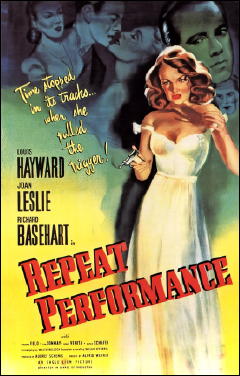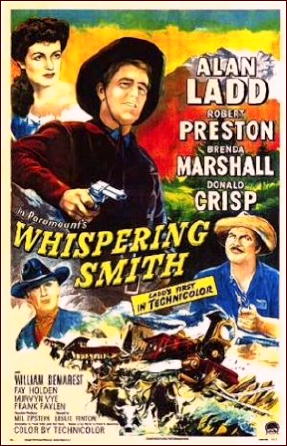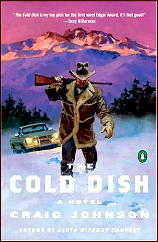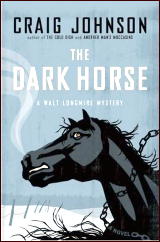August 2011
Monthly Archive
Sun 28 Aug 2011
Posted by Steve under
General[6] Comments
Hurricane Irene is all but over where we are, and we made it through OK. The predictions had the storm aimed straight toward Connecticut all week long, and they were right. But hitting land a couple times along the way took its toll on Irene, and by the time it got here it had been downgraded to “only” a tropical storm.
The rain has stopped and there’s a hint of sun shining through the clouds, but with the center of the storm going north, the winds coming around the southern side are starting to blow, with some strong gusts making the house shake every so often.
We didn’t lose power, as I was sure we would, but with the ground soft and the wind still strong, there’s a chance that some falling trees will take some power lines with them. There are some 800,000 people without power, just here in Connecticut. The state is pretty much a mess. What it’s like lower down the Atlantic coast, I hate to think.
Wed 24 Aug 2011
Posted by Steve under
General[6] Comments
I’ll be taking the next couple of weeks off from blogging. I’ll be back after Labor Day. See you then!
Mon 22 Aug 2011
Ed Hulse on WHISPERING SMITH
and GEORGE O’BRIEN
== Following my recent
review of the Alan Ladd version of
Whispering Smith, the movie, which included some commentary about the real Whispering Smith and some of the earlier films the character was in, Ed Hulse left two long comments that I think deserve a wider audience:
The 1916 Whispering Smith was shot in ten reels. According to which report one chooses to believe, it was originally intended to be either a serial or an extra-long feature film. In any event, it was released as two five-reel feature films, the first in June and the second in July.
Although McGowan played the title role, his then-wife Helen Holmes got top billing in both Whispering Smith and Medicine Bend. She was a much bigger box-office draw, having attained fame as the eponymous star of the Hazards of Helen series (which is often mistaken for a cliffhanging chapter play, owing to the fact that Holmes also starred in episodic thrillers and at the time was second only to Pearl White in the serial-queen sweepstakes).
McGowan’s involvement with the character didn’t stop with the two 1916 features, however. He also played Smith in Universal’s 1927 serial Whispering Smith Rides, but again lost top billing — this time to Wallace MacDonald, whose character was the story’s juvenile lead and carried most of the action.
The piece on the Thrilling Detective website fails to mention that Rides was remade by Universal just three years later, again as a ten-chapter serial, this time titled The Lightning Express. Al Ferguson, usually cast as a heavy, played Smith; the role played by MacDonald in Rides was taken in Express by Lane Chandler.
Although the George O’Brien Whispering Smith Speaks is ostensibly based on several Spearman yarns, it’s essentially an original story using nothing from the author’s works other than some locations and character names.
An unbilled J. P. McGowan has a bit part as a rail-riding old-timer who shares his boxcar with fellow stowaway O’Brien (whose character’s real name is Gordon Harrington Jr.; he only uses Don Smith — not John, as the Thrilling Detective entry erroneously reports — as an alias). Since McGowan had been directing railroad films since 1912, I believe Whispering Smith Speaks producer Sol Lesser hired him as a second-unit director to handle the various train scenes.
The O’Brien film is a particular favorite of mine because George and I were friends for a couple years leading up to his debilitating 1981 stroke, and for my money Speaks is the film that best captures his off-screen personality. But as a Spearman adaptation it isn’t worth a tinker’s damn.
== Then in Comment #5, # Barry Lane said:
Darcy O’Brien wrote a pair of novels, A Way Of Life Like Any Other and Marguerite In Hollywood, that with devastating honesty, and brilliant writing, illustrate the world of George and Marguerite. Ed, you must have known these people and your insights are welcome.
== Here’s Ed’s long reply:
Well, I could go on forever about George O’Brien, but the short form is this: In 1979 I chaired Cinecon, an annual convention of vintage-film fans, collectors, and archivists. Since our guest stars were primarily actors from the silent and early-talkie years, I decided to invite my two top favorites of that era (that is, of those still alive and ambulatory at the time): George and Alice Faye.
Alice had other plans but George — who had been invited to, but never before attended, similar events — accepted my invitation because coming to NYC for the convention would allow him to spend some time with his daughter Orin, a musician with the New York Philharmonic.
Part of our tribute to George included a screening of Sunrise at the Museum of Modern Art, which earlier that year had won a special Academy Award for its film-preservation efforts. Since George was justifiably proud of that film, the opportunity of seeing it at the Museum held considerable appeal.
When the film ended, there wasn’t a dry eye in the house, and I encouraged him to take a bow. The still-fit 80-year-old bounded atop the auditorium stage and, waving and beaming, accepted a standing ovation that, I was told later, lasted nearly five minutes.
As a long-time hobbyist who turned his passion into a career by writing professionally about movies and moviemakers, I’ve met dozens — hundreds, even — of film folk over the years. It doesn’t take long to realize that “picture people†are just as diverse as society at large. You have some nice people and you have some real pricks. Early on, one learns not to judge them by their screen personas.
To my delight, however, George O’Brien turned out to be not only the perfect convention guest — making himself available to fans practically every hour of Cinecon’s three and a half days — but a wonderful, down-to-earth human being as well. I picked him up at New York’s La Guardia Airport, and by the time we had completed the 45-minute drive back to Manhattan, I already felt like we were old friends.
That was George’s way. To this day I have never known a man who could make friends as easily as George O’Brien. And he didn’t put on airs, either: when I offered that first evening to take him to a high-class restaurant in midtown Manhattan, he replied: “Well, that’s very generous of you, Ed, but how about we just go to a comfy place where we have a good hamburger and get to know each other better?â€
Throughout the weekend I never had to look far for him: wherever a group of convention attendees had clustered, I knew he was in the middle, telling some of his many amazing stories. He jokingly referred to himself as “a man of few thousand words,†and he wasn’t kidding.
After the convention, we stayed in touch via letters and phone calls. George still traveled frequently and often wrote me from an airplane while flying to Hawaii or the Philippines or some other Pacific destination. He invited me to visit him when and if I ever came to Los Angeles, but to my everlasting regret he was in Hawaii when I went to Tinseltown for a convention the following year.
That same year (1980), based on the wonderful time he’d had at Cinecon, George finally accepted the invitation extended yearly by organizers of the Memphis Western Film Fair, another annual confab. Since I normally attended that show anyway, I looked forward to seeing George again, especially since one of his fellow guests was Cecilia Parker, his leading lady of several films and a close personal friend as well. But I deliberately decided not to tell him I’d be there.
As the Memphis film festival — being oriented toward “B†Westerns and serials — catered to a somewhat different fan base than Cinecon, I realized that virtually all of the attendees would be meeting George for the first time. Upon arriving at the show, I could instantly tell where he was by looking for the biggest crowd huddled in a circle. But I didn’t want to interfere with these other fans and deliberately remained in the back of the room while he autographed photos and regaled the fans — most of them middle-aged men who gazed at their childhood hero with the worshipful stare of a ten-year-old — with stories of Hollywood’s halcyon days.
At length the crowd thinned and we made eye contact. Then, as though he had last seen me a day earlier, he smiled and said: “Oh, hello, Ed.†After signing a few more stills and wrapping up a story, he told the surrounding fans, “Gents, please excuse me for a minute while I go say hello to an old friend…†— at which point he gestured to me, and all eyes swung in my direction. To this day, 31 years later, I still remember the pride I felt at being identified as one of George O’Brien’s old friends.
Later that day, during a lull in the action, George said to me: “Oh, let me introduce you to Skippy.†I had not the slightest idea whom he meant; no such name appeared on the convention guest list. But it turned out to be Cecilia Parker.
“Skippy,†he said, “I’d like you to meet a good friend of mine, Ed Hulse.†I stammered a bit as I shook her hand, and Parker instantly knew why I was temporarily tongue-tied. “He’s been calling me Skippy for close to 50 years,†she explained. “He gave me that nickname when we did our first picture together [1931’s The Rainbow Trail].†At the time she was 17 and just out of convent school.
I must be a man of few thousand words myself, because I realize I still haven’t answered the questions posed above.
I met Darcy in 1991 at a 60th anniversary screening of Riders of the Purple Sage, the film that paired George and Marguerite and eventually led to their marriage.
He told me he regretted that some people had assumed the George-like character in A Way of Life Like Any Other was identical to his dad in every particular. Like most novelists, he created characters who were composites. (Although I later learned, however, that his mother was closer to the Marguerite in Hollywood protagonist than George was to his Way of Life counterpart.)
And in any case, George didn’t take offense. In fact, he mentioned the book in a couple different letters to me, in one case proudly reporting that it had just won some literary award.
I’m not given to idolatry of my favorite movie stars; in fact, my experiences with some have made me quite cynical about the breed in general. But George O’Brien impressed me profoundly, and I still cherish the memory of our relatively brief but genuinely warm friendship.
George even took something of a paternal interest in me, giving encouragement when I began my career as a professional writer and telling a mutual friend that he was concerned about my recent weight gain.
I often cite Whispering Smith Speaks — which is really a romantic comedy, not a blood-and-thunder action piece — as the film whose protagonist best represents the real George O’Brien: warm, funny, gregarious, supremely self-assured without being arrogant.
It’s well worth seeking out for that reason alone, although it’s never been commercially available on any home video format. You can only get it in bootleg VHS or DVD versions.
Mon 22 Aug 2011
REVIEWED BY DAN STUMPF:
â— REPEAT PERFORMANCE. Eagle-Lion Films, 1947. Louis Hayward, Joan Leslie, Virginia Field, Tom Conway, Richard Basehart, Natalie Schafer, Benay Venuta. Based on the novel by William O’Farrell. Director: Alfred L. Werker.
â— WILLIAM O’FARRELL – Repeat Performance. Houghton Mifflin, hardcover, 1942. Pennant P55, paperback, revised edition, May 1954; IPL, paperback, 1987. Films: See above, plus: Turn Back the Clock, TV movie, NBC, 1989, with Connie Sellecca & David Dukes (and Joan Leslie in a small role).
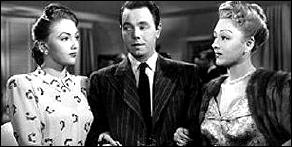
So we came to the end of 2010 and I watched the old year out with two of my favorite New Year’s movies, Chimes at Midnight and Repeat Performance with Joan Leslie as stage actress Sheila Page, who rings in 1947 by killing husband Barney (Louis Hayward).
Suitably distraught, she wanders out into the clamoring night, runs into some old friends (including Richard Basehart as a mad poet, poetically named William Williams) who commiserate with her on what a lousy year it’s been, then goes to see her producer (Tom Conway).
But on her way up to Conway’s apartment, her clothes and hair change, the lights flicker, and suddenly it’s a year earlier, and Joan will get a chance to undo all the mistakes that led to infidelity, insanity and murder.
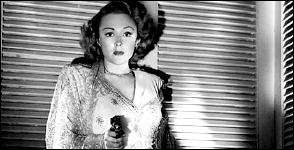
Or will she? What follows is a neatly ironic tale of predestined ends, a bit over-the-top at times, but kept mostly teetering right at the edge of melodrama, thanks to adroit direction from Alfred Werker (a director with an odd career, who really should be better known) and low-key playing from all concerned, particularly Louis Hayward, who had a long and mostly undistinguished career, but now and again suggested something kind of interesting. His role here as Joan Leslie’s ill-starred spouse sports a lethal fecklessness that’s fun to watch.
I also ferreted out the novel this was based on, Repeat Performance by William O’Farrell for comparison, and I’m glad I did, as the story seems to have been considerably re-jiggered for the movie.
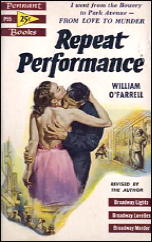
O’Farrell starts off with Barney Page, once a prominent stage actor, now a skid-row drunk, waking up in a flop house to find he has just murdered a one-time girlfriend, in a fit of alcoholic remorse following the suicide of his wife Sheila.
Page is resigned to his fate, but on his way to turn himself in, he keeps running into old friends (including a gay poet affectionately nick-named William and Mary) who try to help him, and ends up fleeing from the cops, getting shot as he jumps onto a departing subway car and — and suddenly it’s a year ago, Barney is still a successful actor, married to Sheila, and he’s going to get to undo all the mistakes he made last year.
O’Farrell can write. He can put across a bitchy theatrical milieu and a seedy flophouse with equal aplomb, evoke a desperate chase and a disparate seduction with commensurate suspense, and weave a tale of murder and melodrama (verging on Soap Opera at times, but teetering skillfully on the edge) with prose that keeps the pages turning very nicely.
He also wraps things up with a fine sense of dramatic irony that had me closing the book with that satisfaction you get from finishing a well-crafted tale.
Mon 22 Aug 2011
WAGON TRAIN – The John Wilbot Story. Season 1, Episode 37. 11 June 1958. Ward Bond, Robert Horton; with Dane Clark, Robert Vaughn, Audrey Dalton, Tyler McVey.
With Flint McCullough unable to perform his regular scouting duties because of an injured arm, he and Major Adams switch roles. Adams goes out ahead on horseback, leaving McCullough in charge of the wagons. Little do either of them know that two factions among the settlers are still fighting the recently ended Civil War.
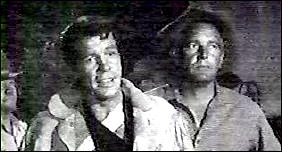
To the details. Roy Pelham (Vaughn) is from the South, and he loves Harriet Field (Dalton), but her father (McVey) is a bull-headed abolitionist from Massachusetts, who refuses to allow her to have anything to do with him.
Seeking comfort and a companion, Harriet finds a lonely man (Dane Clark) who is glad to recite poetry and Shakespeare to her — until, that is, her father begins to suspect that John Wilbot is really an alias for none other than John Wilkes Booth.
Unsure if he is or not, the wagon train is about to split apart when, in the face of an imminent Indian attack, Wilbot reminds everyone of Lincoln’s famous quote, “A house divide against itself shall not stand.” Does he admit he is Booth? You will have to watch and find out for yourself, but his statement makes sure the train stays together.
The hour (less commercials) goes very quickly, and even though it’s wrapped up in suitably enigmatic fashion, one is reminded that television at one time was written by adults, and that the performers were adults as well.
Particularly impressive is Dane Clark’s melancholy portrayal of a man tormented by his memories and fully aware that he has no future.
— Reprinted from Durn Tootin’ #5,
July 2004 (with revisions).
Mon 22 Aug 2011
THE BACKWARD REVIEWER
William F. Deeck
VIOLET TWEEDALE – The Beautiful Mrs. Davenant. Frederick A. Stokes, US, hardcover, 1920. First published in the UK by Herbert Jenkins, hardcover, 1920. Currently available from many sources as a Print On Demand book.
Why did the beautiful and mysterious widow Hilda Davenant choose to live outside Great Glentworth near a Thorpe, with whom she had done for all time but whose seal is indelibly imprinted on her life?
Why did Geoffrey Thorpe, who was extravagant and indebted when poor and penurious when he achieved wealth, allow the lovely Lake House to deteriorate around him?
Why when the presumed dead Mark Thorpe is mentioned does Geoffrey turn pale and cast “an affrighted glance” over his shoulder? Why is Geoffrey dominated by his housekeeper? Is there a ghost who wanders the halls of Lake House in the early a.m.?
Surely some reader with more forbearance than I possess got farther into the book, subtitled” A Novel of Love and Mystery,” than I did.
If so, I would be willing to chuckle at the answers as long as I don’t have to discover them for myself.
— From The MYSTERY FANcier, Vol. 12, No. 3, Summer 1990.
Biographical Notes: Mrs. Tweedale has her own page on Wikipedia, which is where I’ll direct you if you wish more information about her. I’ll be concise here and excerpt only the following:
“Violet Tweedale, née Chambers (1862 – 19 December 1936), was a Scottish author, poet, and spiritualist.”
“[She] was born in Edinburgh, the eldest daughter of Robert Chambers, editor of Chambers’ Journal, and the granddaughter of Robert Chambers, the publisher and founder of W & R Chambers.”
“She was a prolific writer of short stories, published as anthologies, and novels, often with a romantic or supernatural theme.”
Googling on the Internet will reveal much more about the author. In her day, she was quite a personality.
Mon 22 Aug 2011
Posted by Steve under
ReviewsNo Comments
REVIEWED BY MICHAEL SHONK:
DECLAN BURKE – Absolute Cool Zero. Liberties Press, Ireland, trade paperback, July 2011; US, 28 November 2011. (Kindle edition available now.)
Declan Burke continues to expand the limits of not only his own writing, but of the Irish crime fiction genre as well. His latest, Absolute Cool Zero, is the story of the clash between writer and his abandoned creation come back to life, a character who is willing to blow up a hospital to get published.
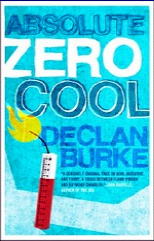
“He just appears, as if wished for,” wrote the writer.
Declan is trying to finish the book his publisher is impatiently waiting for when he is interrupted by a man he does not recognize, but who knows him. The man claims to be Karlsson, a fictional character from an earlier book written by Declan but never published. In that book, Karlsson was a hospital porter who killed old people who wanted to die.
Now Karlsson is seeking another chance to be published and find closure. He has changed his appearance and his name. Now calling himself Billy, he wants Declan to rewrite the book, take Karlsson’s plans a step further, and blow up a hospital full of people.
Declan humors Billy at first, as the two form the most basic of writer’s groups. critiquing the other’s suggestions. The mind games and disturbing discussions between Declan and Billy about love, family, violence, and survival slowly evolves into a surreal nightmarish struggle as both writer and character attempt to escape a past they fear could destroy them.
Billy wants desperately to escape the muddled fate of Karlsson in the first book. He wants things to turn out differently between himself and Cassie, the female character he hopes to raise a family with, and who he, as Karlsson, may have killed in the first book (neither Declan or Billy know for sure).
Now happily married with a baby daughter, Declan worries about what would happen to him without his family. They had saved him from that terrible time in his life when such monsters as remorseless killer Karlsson lived in his head.
Each spends time away from the other. Declan with his loving family. Billy with Cassie and working as a hospital porter at what seems to be a very real hospital.
Absolute Cool Zero is a fine example of comedic crime noir. As I was reading it, I was thinking of Donald Westlake and Parker.
Absolute Cool Zero is also a fine example of Irish literary fiction. John Banville (Benjamin Black) describes Declan’s writing in AZC as “a cross between Flann O’Brien and Raymond Chandler” (on the AZC front cover).
If you enjoy modern crime noir, especially with an Irish comedic touch, this is an author you need to read.
Sat 20 Aug 2011
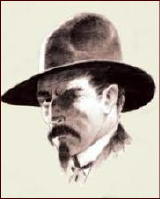
WHISPERING SMITH. Paramount Pictures, 1948. Alan Ladd, Robert Preston, Brenda Marshall, Donald Crisp, William Demarest, Fay Holden, Murvyn Vye, Frank Faylen, John Eldredge. Based on the novel by Frank H. Spearman. Director: Leslie Fenton.
You can learn a lot by writing reviews, or at least I do. For example, I never knew there was a real “Whispering†Smith, and that he really was a railroad detective, among other occupations. You can read about some of his exploits online here at the Legends of America website.
A writer named Frank Spearman was intrigued by the name and wrote an early western novel about a railroad detective named Whispering Smith in 1906, but his work of fiction and the his facts seemed to brush up against reality only on occasion.
There also were three early silent films with Whispering Smith as the hero. Quoting from Kevin Burton Smith’s Thrilling Detective website:
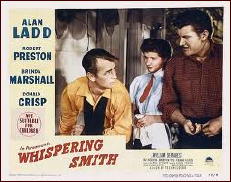
“There was a 1916 silent film […] followed by another silent film in 1926. That in turn was followed by yet another silent flick,
Whispering Smith Rides in 1927, inevitably followed in 1935 by
Whispering Smith Speaks, his first talkie. Each film wandered a little further from the source material, but the real oddity was 1951’s
Whispering Smith Hits London, wherein Smith travels to England and tangles with Scotland Yard …â€
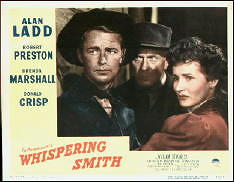
There was also a TV series on NBC that starred Audie Murphy in 1961, but it didn’t last long, only half a year. It is easily available on DVD.
It was Alan Ladd, though, who played Whispering Smith in this movie made in 1948. While Ladd was notorious for being short, he also had the ability to command attention in a crowded room by speaking barely above a whisper. Or at least he did in the movies, and in this one in particular.
He’s also a railroad detective in this film. His good buddy Murray Sinclair (boisterously played by Robert Preston, who does boisterous very well) is a rancher who works part time for the railroad to clear up train wrecks. When business is bad, he creates his own train wrecks. He has fallen on hard time, however, and in with bad friends.
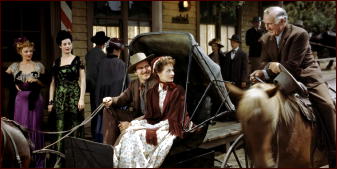
Murray has also married the girl that Smith had had a wish for, to Smith’s lasting regret, though he will never admit it, to anyone, and to Marian Sinclair’s regret as well (she being portrayed by beauteous Brenda Marshall). It’s this tacit love triangle that lies between these three old friends, as well as Murray’s taste for the good life, one that will (eventually) bring him to a bad end.
I am not revealing anything I shouldn’t here, not if you’ve watched a few movies and a few of them happen to have been westerns. This was Alan Ladd’s first western, and the first movie he did in color. The stars are fine, the story’s passable, and you should have as much fun watching this one as I did.
Sat 20 Aug 2011
REVIEWED BY STAN BURNS:
CRAIG JOHNSON – Kindness Goes Unpunished. Viking, hardcover, March 2007. Penguin, softcover, February, 2008.
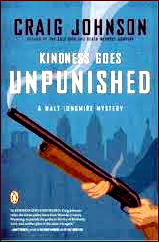
This is the third Wyoming Sheriff Walt Longmire novel. He and his friend Henry Standing Bear are on a trip to Philadelphia. Henry is going because he has been invited to put on an exhibition of family Indian reservation photos at a museum, while Walt is going to visit his daughter Cady, who lives there.
His daughter thinks she has met “the one” and wants to introduce him to her father. But Walt never gets to see her; he finds that she is hovering in a coma near death in the hospital after being attacked by an unknown male assailant outside the same museum that will host Henry’s photos.
With the help of Henry, Walt sets out to find the person responsible. He discovers that the boyfriend is more than likely the guilty party; that he was a gambler and drug addict. But the boyfriend is thrown off a bridge to his death before Walt can question him, causing him to wonder if his daughter had discovered something about the boyfriend that would cause him to attack her.
Walt continues to investigate trying to discover what is really behind the boyfriend’s death. Not as good as the first novel, but the Philadelphia locations feel very real and the writing keeps you turning pages.
Rating: B.
The Sheriff Walt Longmire Mysteries —
1. The Cold Dish (2004)
2. Death Without Company (2006)
3. Kindness Goes Unpunished (2007)
4. Another Man’s Moccasins (2008)
5. The Dark Horse (2009)
6. Junkyard Dogs (2010)
7. Hell Is Empty (2011)
Fri 19 Aug 2011
A FILM EVENING WITH
THE SHERLOCK HOLMES SOCIETY OF LONDON
by Geoff Bradley
This is an annual event, held in November, and having missed the last couple, I managed to get into London last year [2010] for this one. First up was a illustrated talk by Rick Leary who was Computer Graphic Supervisor for the Guy Ritchie film Sherlock Holmes. He talked about how they recreated the banks of the Thames for the shots in the film.
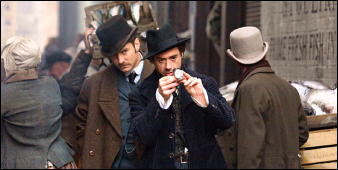
I was amazed by the amount of time and effort that they spent getting detail correct. The first thing he did was to get Victorian maps of the area from which to work. Panoramic digital photographs were taken from the high walkways on Tower Bridge and then existing Victorian building were found (some in Manchester) that were inserted to replace modem ones.
As he said, most of the original buildings from that time that hadn’t been naturally replaced, were destroyed in the Blitz. A helicopter shoot was arranged, taking a great deal of time in these security conscious days, to film the Thames itself, but the day (in November) turned out to be so sunny that the footage couldn’t be used.
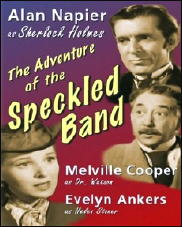
In fact, he said, although they tried to use photographs of the Thames for the film, reflections in the surface meant that they couldn’t. He ended by showing excerpts from the film showing the final fight scenes on Tower Bridge, firstly with the green screen background as the actors grappled in the studio, and then with CGI imposed.
It was an illuminating talk (in more ways than one) and I was very impressed by the amount of care that was spent in making the background detail authentic.
Secondly came a 1949 thirty-minute television production of “The Adventure of the Speckled Band” with Alan Napier (later to become Alfred to Adam West’s Batman) as Sherlock Holmes. This was part of a series Your Show Time and was a fairly routine rendition which could be described, I suppose, as dated but enjoyable.
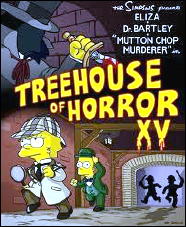
Melville Cooper made a Watson straight from the Nigel Bruce School of Performing Arts. The series was sponsored by Lucky Strike which perhaps explains why host and narrator Arthur Shields should suddenly take a moment to exhale smoke directly at the camera.
Another amusing moment was when, as Helen Stones started to tell her story, Holmes started to light the biggest curved pipe you could wish to see.
The third item was “Four Beheadings and a Funeral”, a seven minute excerpt from “Treehouse of Horror XV”, a 2004 episode of The Simpsons. It was a Jack the Ripper style story (Jack the Rip-off?) with Eliza Simpson as the Holmes look-a-like, hindered by the Watsonian Dr Bartley. Other Simpsons regulars, including Marge as a flower girl, cropped up using deliberately exaggerated phoney cockney accents. An amusing sequence that I hadn’t seen before.
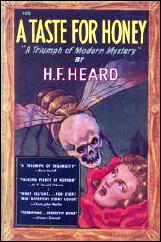
Finally we had “Sting of Death”, a 1955 episode from The Elgin Hour, based on A Taste of Honey by H.F. Heard. The leading character here is Mr Mycroft (supposedly, though not exactly stated, Sherlock Holmes) played by Boris Karloff. He comes to the rescue of Mr Silchester (a self-contained, stuffy man superbly played by Robert Flemyng) when he is attacked by the bees of the local beekeeper Hargrove (Heregrove in the book).
The book’s weakness (well one of them) is that there seems no rational explanation for Heregrove’s actions (assuming that his actions are scientifically possible, a large assumption) except that he is mad. The film follows the book fairly faithfully (except for the necessary shortening) and somehow the failings appeared less as they are more easily overlooked as the action moves on.
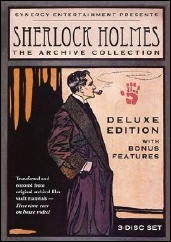
Karloff was fine as the elderly retired Holmes and Hermione Gingold put in a sterling performance as the deliberately perky housekeeper. Another dated but enjoyable production, which linked with “Speckled Band above when, in his final scene, Karloff proceeded to light the second largest curved pipe of the evening.
I know, now, having checked after writing the above, that “Speckled Band” and “Sting of Death” are available on a US DVD together with other, some less Sherlockian, material. I’m trying to resist but the temptation is there.
Editorial Comment: The DVD set is easily found in the US at least, including from Amazon. Some of these films and TV programs are also available as videos on the Internet. A little Googling should turn them up without much difficulty.
Next Page »



